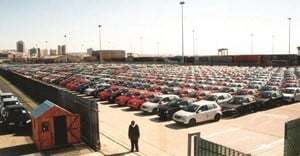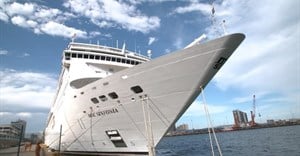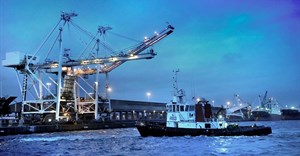
Subscribe & Follow
New truck lane in Cape Town Container Terminal eases congestion

This truck entrance is a significant milestone to the industry and port users with its alleviation of truck congestion from Duncan Road, located within the Port of Cape Town. The new truck entrance comprises of four lanes and a fifth lane for abnormal cargo, leading into the recently combined A and P Check that serve as a truck and container verification point for the terminal.
The five lanes provide a wider truck entrance channel into the terminal compared to the two-lane traffic flow it replaces. In addition, the trucks will now be serviced from kiosks located adjacent to each lane. This will result in quicker and safer service, as truck drivers will not be required to disembark their vehicles.
"The new facility will be beneficial to harbour carriers and ultimately to the entire supply chain. These will allow terminal management to have improved control on traffic, more especially as we approach our peak season," says Transnet Port Terminals' acting chief operations officer - Container Sector, Velile Dube.
Expanded refrigeration capacity
The Cape Town Container Terminal's peak season falls within the months of November and April. During this season the terminal handles larger volumes of Reefers. Approximately 70% percentage of the Reefers are stacked in the RTG stacking area, with the conversion of the terminal into a RTG operation being one of the key objectives of the expansion project.
The completion has increased the terminals' RTG Reefer capacity with an additional 936 RTG Reefer points, bringing the capacity of the RTG Reefer stack to 2712. This has resulted in the terminal's total Reefer capacity tripling to 3884 Reefers since the commencement of the expansion project.
"The increased Reefer capacity couldn't have come at a better time. It will enable us to efficiently service the greater volumes expected during the peak season," says Dube.
To date, the expansion project has provided the terminal with 720 m of refurbished quay wall to accommodate two large 305 m vessels along the quay. The remaining 412 m of the quay wall is currently under refurbishment and is due for completion by 2013. The phasing-in of RTG has now been complete and the full complement of 28 RTG are in operation. The delivery of two additional ship-to-shore (STS) cranes is expected in December 2011. These cranes will be commissioned in April 2012, resulting in the terminal being equipped with a total of eight cranes.
The development of the terminal's human capital is progressing according to schedule. This has entailed an aggressive recruitment and training programme for operators of lifting equipment (OLEs) to operate the new STS cranes and RTGs.














